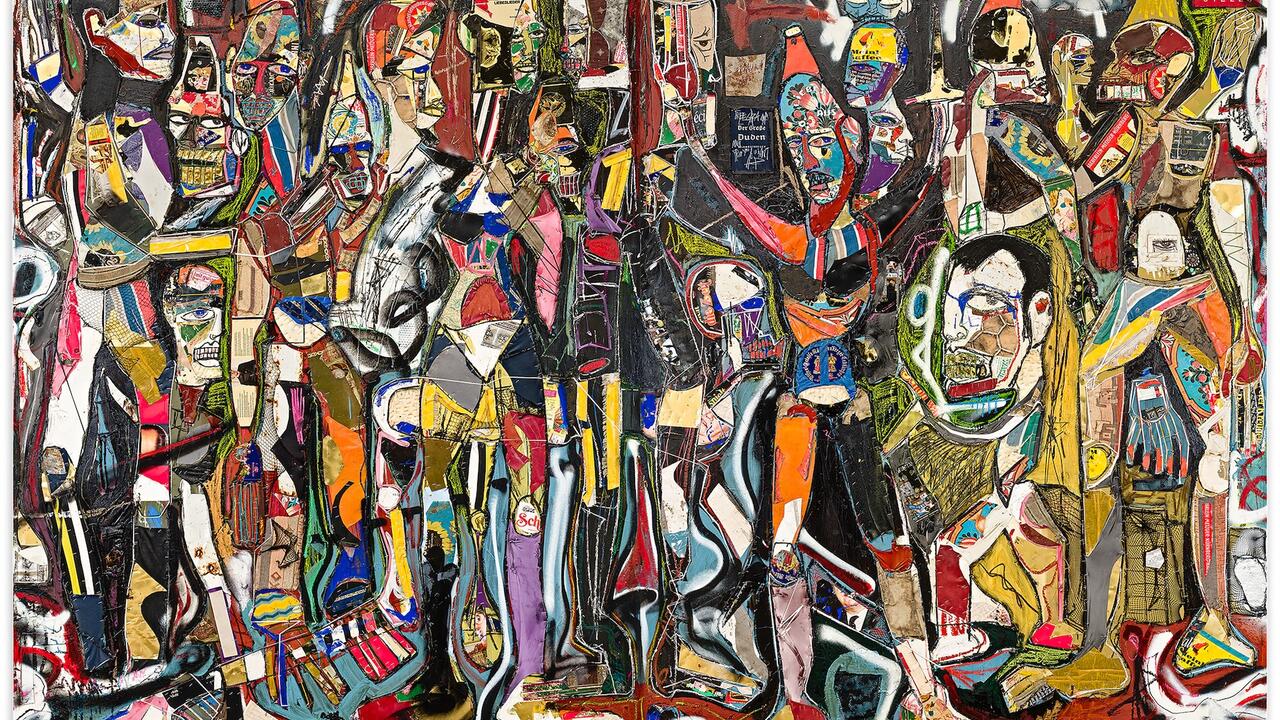The Real Thing
Behind the renewed interest in Performance Art lies a desire to bring the real and the representation closer together
Behind the renewed interest in Performance Art lies a desire to bring the real and the representation closer together
I saw a Hermann Nitsch CD in a music store the other day, and I wasn't particularly surprised. In the last two or three years, in the US at least, there has been a lot of interest in performance art. There have been books (and more are coming), issues of journals, academic conferences and exhibitions of older works - or their documentation - especially from the 60s and 70s. Elements of performance and its companion, video, have appeared in works by high-profile, younger contemporary artists (Janine Antoni, Matthew Barney, Gillian Wearing etc.). Now, to top it all off, there is the enormous, impressive exhibition at Los Angeles' MoCA, 'Out of Actions: Between Performance and the Object, 1949-1979'.
Why now? Some of this interest probably sprouts from a more general attention to the art of the ’60s and ’70s, to be explained, in part, in terms of attempts to disavow both the neo-Expressionism and high theory of the ’80s. But what begins to emerge, especially in relation to performance, is a rhetoric of 'realness'. Performance, we are told, despite the fact that we are looking at 20-year old photographs or videotapes, takes place in 'real' time; its medium is alternately time itself, or 'the body', which is irreducible. If this speaks of a desire for relatively naive - or, to be more generous, direct - forms of art, perhaps it is telling that 'Out of Actions' is not really a performance exhibition. Instead, it is an object-driven show that attempts to relate the nature of those objects to the nature of the actions that produced them.
The huge exhibition moves from a diptych of Hans Namuth's film of Jackson Pollock at work, playing on a monitor next to Pollock's Number 1 (1949), through - among so many other things - Japanese Gutai painting performances from the ’50s; photo-documentation of Valie Export's Genital Panic (1969), in which Export, in crotchless jeans and packing an Uzi, roamed the aisles of a porn cinema challenging viewers to deal with the real thing (there's that 'real' thing again); relics of Hermann Nitsch's bloody ritual drama, Asolo Raum (1971), to the most recent works, set pieces by Mike Kelley and Paul McCarthy. It also includes a nifty video system that allows you to select edited tapes instead of working through a whole programme. In the face of all this, perhaps it's not surprising that the only definition of performance that you might derive from the exhibition would be that it is an attitude which seeks to equate acts of making with objects made. Any object is bound to the processes of its making, however, so in 'Out of Actions', the definition of performance is really a question of emphasis. This is very general, and not necessarily what any number of performance artists might have had in mind, but the canny curator, Paul Schimmel, insists that 'it really is not a performance show - that's one thing I was completely clear on'.
Still, the show's focus on objects - whether a painting made by Kazuo Shiraga with his feet, a grainy photograph, a video installation, the 'relics' of some of Chris Burden's early work, or Raphael Montañez Ortiz' smashed piano - may reveal, as Mike Kelley put it, the museum's stake in 'maintaining traditional genre distinctions that almost every piece in the show set out to break down'. So, even if the objects - through which we are meant to encounter actions, or the idea of performance - are unfamiliar or downright strange, their massed display, together with the near absence of live performances from the exhibition, serves to rescue static objects from performance, as it were, and restrict time-based media to a dependent or minor status. (Perhaps to offset this, Kelley and McCarthy were invited to organise a programme of events in a front gallery that did include live performances, but also served to delineate what kind of an exhibition 'Out of Actions' was not.) On the face of it, Kelley's point is not completely implausible, and it would be easy enough to construct the sort of ideological-financial conspiracy scenario that would see the exhibition's focus on objects as the institution's compromise with itself and its sponsors. But as Schimmel observed, the relative lack of concentration on individually famous artists and the thematic nature of the show 'made the largest potential corporate sponsors just sort of say, "mmm, no"'.
The Namuth/Pollock diptych, which will inevitably receive a lot of critical attention, suggests that Pollock's famous dance (but, more to the point, Namuth's representation of it) provided a foundation, however unstable, for a gestural tradition of performance. Nearby in the same introductory room, John Cage's score for Water Music (1952) points to a more conceptual strand. These are fuzzy categories to start with, and the show clearly leans toward more visceral work that models the pathological collapse of public and private as parameters of subjectivity (or just participates in that collapse, as in John Duncan's Blind Date (1980), in which he apparently bought a female cadaver in Mexico and fucked it). Part of the interest in performance, then, may be related to a slightly earlier moment of intense interest in the abject. Like the desire for the abject, the desire for 'realness' in performance is a wish to obliterate the distinction between real and representation. And in both cases, this desire is wilful.
The way in which the gestural/visceral and conceptual strands of performance referred to by the objects in 'Out of Actions' quickly curl around one another is telling. This is seen nowhere more clearly than in the video of Yoko Ono's Cut Piece (1964), in which members of the audience walk up to Ono, sitting demurely and passively on a stage, pick up the scissors lying to hand, and snip bits from her clothes. The first people to do so are women, who take small souvenirs, buttons and so on. Gradually, as men become involved in stripping her (and because of, not despite how predictable it seems), this conceptual exercise in effacing the boundary between performer and audience generates a wave of feminist-analytical terror. Ono was there, in person, but her body took on meaning in the piece in terms of the conceptual framework (which is why it remains chilling, on video, 35 years later). Cut Piece may really have been dangerous, but to mistake that danger for some unmediated version of 'realness' - all too often the case with performances involving risk or pain - would be to deny the work's nature as performance. It didn't just happen. Ono made a performance. Actual flesh can't be separated from actual ideas, or, to put it another way, you can't turn your own body into your medium unless you 'really' are a Cartesian subject.
Kristine Stiles concludes her encyclopaedic catalogue essay, packed with historical details, by asking 'How much reality can we bear?' But perhaps the question ought to be, 'How much performance can we bear?' As that lucid and wily former performance artist Vito Acconci put it, in an essay reflecting on his early work: 'Performance of the ’70s acted as if it was real ... But the belief couldn't hold up, the facts showed the theory for the wishful thinking it was ... this "real" was set up, this "real" was for performance's sake.'






















